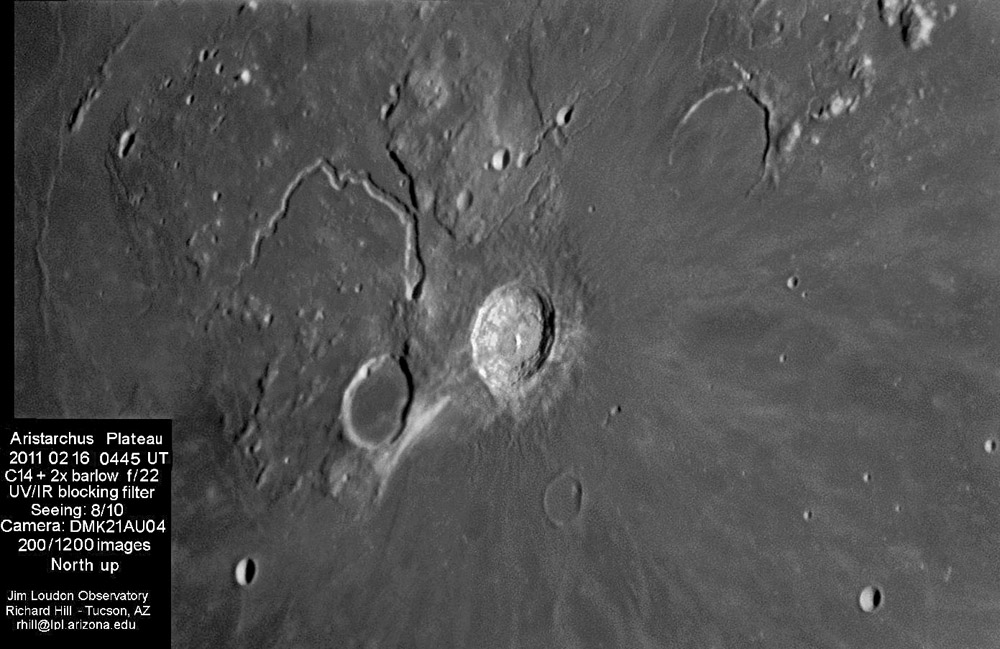Difference between revisions of "March 16, 2011"
| Line 21: | Line 21: | ||
Rükl plate [http://the-moon.wikispaces.com/R%C3%BCkl+18 18]<br /> | Rükl plate [http://the-moon.wikispaces.com/R%C3%BCkl+18 18]<br /> | ||
<br /> | <br /> | ||
| + | <p><b>Yesterday's LPOD:</b> [[March 15, 2011|Tiara of Lights]] </p> | ||
| + | <p><b>Tomorrow's LPOD:</b> [[March 17, 2011|What is Hidden Below the Surface?]] </p> | ||
<hr /> | <hr /> | ||
Revision as of 10:54, 7 February 2015
A Hill of Speculations

image by Richard Hill, Tucson, Arizona
Imagine a time, perhaps 3.5 billion years ago, long before Aristarchus formed, when Herodotus was a deep crater with
terraces and central peak. When it, in fact, looked just like Aristarchus. What happened to it? Its smooth skating rink
floor shows that lava has filled in the depths, covering the central mountain and terraces. Because the rim of Herodotus
is unbroken, the lava must have risen up fractures, as at Plato and Archimedes. Perhaps the lava came from the same
source that fed Schröter's Valley and bleed out to make the surrounding mare. But Herodotus formed by impact into the
Aristarchus Plateau so the crater must have been formed nearer the end of the volcanic activity that formed the Plateau.
In false color images Herodotus is veneered by pyroclastics from the Valley - that eruption must have been subsequent
to the lava-filling of Herodtus. So we've built a stratigraphy of sorts but still don't know why and exactly when Herodotus
was flooded. On a different note, it is remarkable that two large craters formed near the south edge of the Plateau.
Chuck Wood
There is another piece of stratigraphy that constrains the time of formation of Herodotus - do you recognize it?
Related Links
Rükl plate 18
Yesterday's LPOD: Tiara of Lights
Tomorrow's LPOD: What is Hidden Below the Surface?



